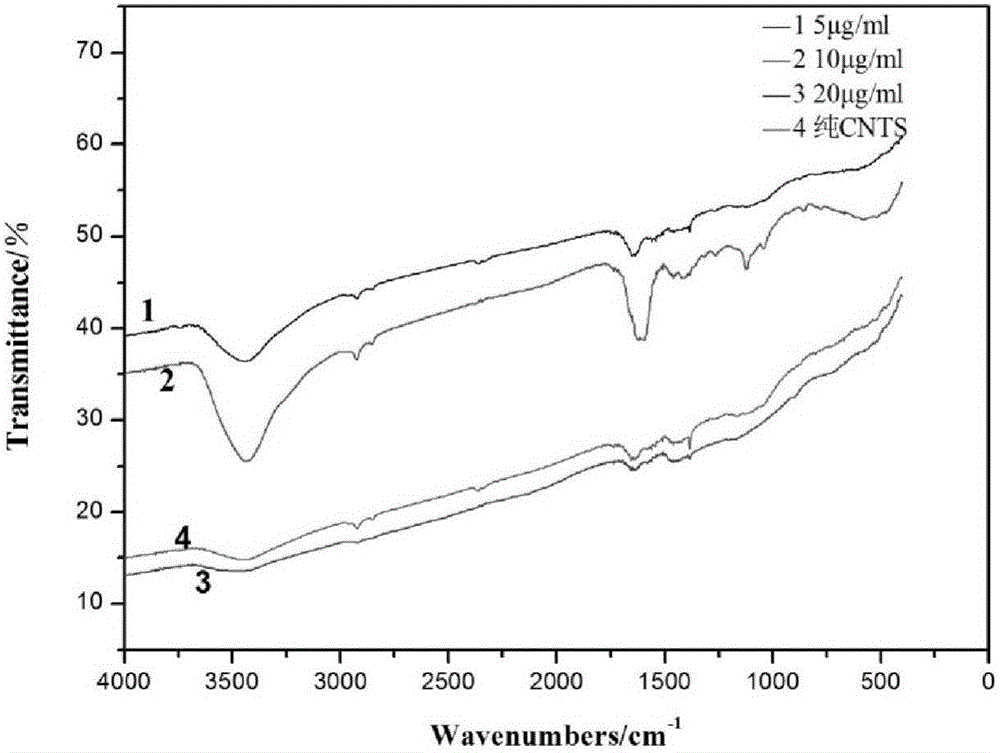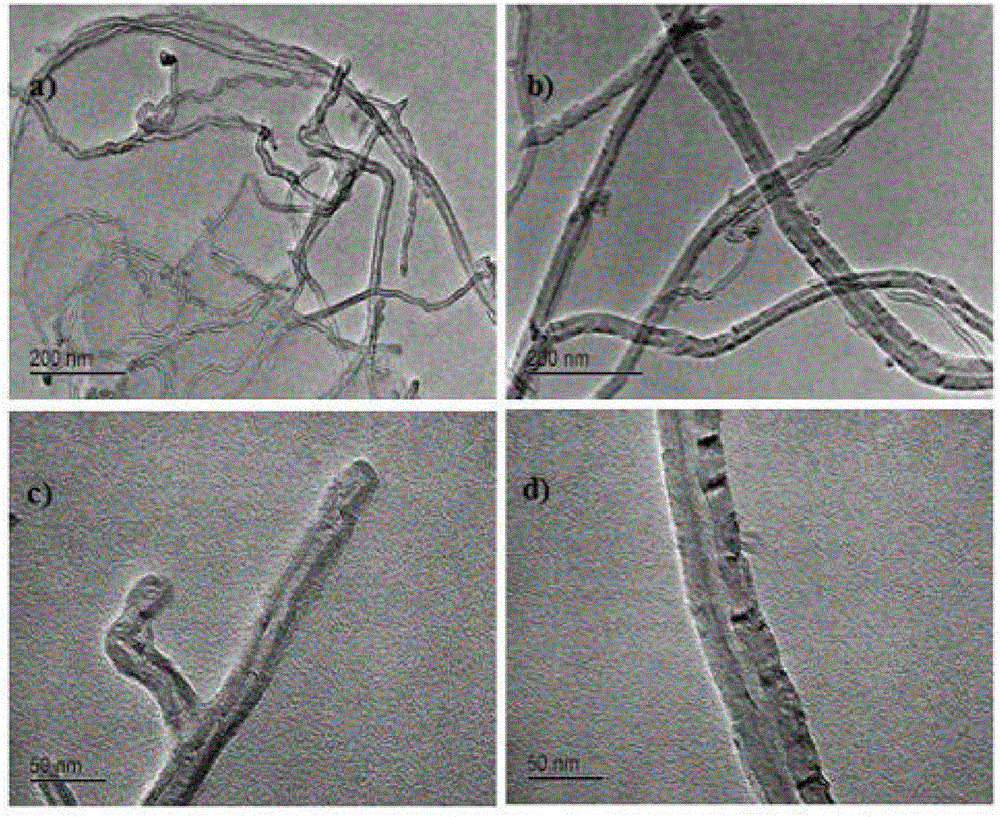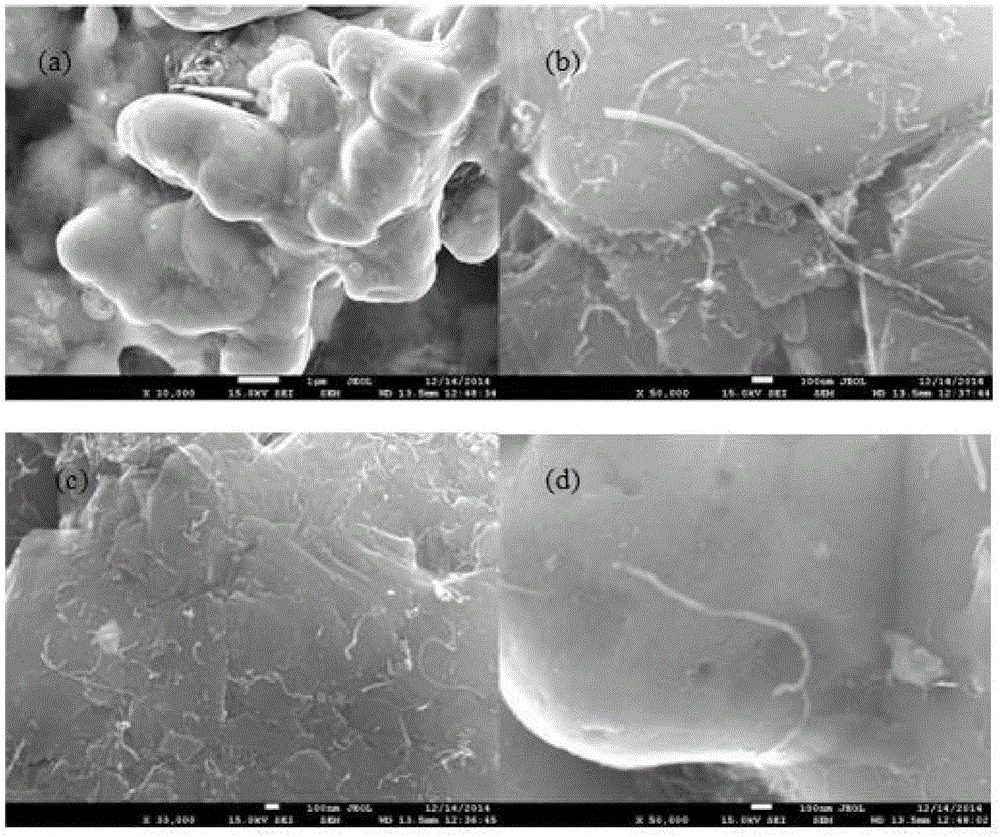Carbon nanotube reinforced copper-based composite material and preparation method thereof
A technology of copper-based composite materials and carbon nanotubes, applied in the field of composite materials, can solve problems such as environmental pollution, performance degradation of carbon nanotube materials, and application difficulties
- Summary
- Abstract
- Description
- Claims
- Application Information
AI Technical Summary
Problems solved by technology
Method used
Image
Examples
Embodiment 1
[0047] Preparation of modified carbon nanotubes
[0048] Add multi-walled carbon nanotubes to 10 μg / mL gallic acid aqueous solution, disperse evenly, let stand for 24 hours, filter, collect the filter residue and dry it in vacuum at 60°C for 2 hours to obtain surface-modified carbon nanotubes. Wherein the ratio of the weight of the carbon nanotube to the volume of the gallic acid aqueous solution is 0.5g:60mL.
[0049] Evenly disperse 0.1 g of the surface-modified carbon nanotubes prepared in Example 1 in 100 mL of deionized water. After standing for 5 days, the precipitation gradually increases under the action of gravity, but the carbon nanotubes still maintain a dispersed state, and no Agglomeration; at the same time, compared with unmodified carbon nanotubes, precipitation occurred after standing for 1 day, and agglomeration occurred between carbon nanotubes, indicating that the surface-modified carbon nanotubes prepared in Example 1 have excellent dispersibility .
Embodiment 2
[0051] Preparation of modified carbon nanotubes
[0052] Add multi-walled carbon nanotubes to 3 μg / mL gallic acid aqueous solution, and disperse evenly, wherein the ratio of the weight of carbon nanotubes to the volume of gallic acid aqueous solution is 0.5g: 60mL; let stand for 12h, filter, and take the filter residue at 70 and dried under vacuum for 1 h at °C to obtain surface-modified carbon nanotubes.
[0053] Disperse 0.1 g of the surface-modified carbon nanotubes prepared in this example evenly in 100 mL of deionized water. After standing for 3 days, the precipitation gradually increased under the action of gravity, but the carbon nanotubes remained dispersed and did not agglomerate. . It shows that the surface-modified carbon nanotubes prepared in Example 2 have excellent dispersibility.
Embodiment 3
[0055] Preparation of modified carbon nanotubes
[0056] Add multi-walled carbon nanotubes to 18 μg / mL gallic acid aqueous solution, and disperse evenly, wherein the ratio of the weight of carbon nanotubes to the volume of gallic acid aqueous solution is 0.05g: 20mL; let it stand for 30h, filter, and take the filter residue at 80 and dried under vacuum for 3 h at °C to obtain surface-modified carbon nanotubes.
[0057] Disperse 0.1 g of the surface-modified carbon nanotubes prepared in this example evenly in 100 mL of deionized water. After standing for 2 days, the precipitation gradually increased under the action of gravity, but the carbon nanotubes remained dispersed and did not agglomerate. . It shows that the surface-modified carbon nanotubes prepared in Example 2 have excellent dispersibility.
[0058] From Examples 1 to 3, it can be seen that the surface-modified carbon nanotubes prepared in Example 1 gradually precipitated under the action of gravity after standing...
PUM
| Property | Measurement | Unit |
|---|---|---|
| concentration | aaaaa | aaaaa |
| concentration | aaaaa | aaaaa |
| concentration | aaaaa | aaaaa |
Abstract
Description
Claims
Application Information
 Login to View More
Login to View More - R&D
- Intellectual Property
- Life Sciences
- Materials
- Tech Scout
- Unparalleled Data Quality
- Higher Quality Content
- 60% Fewer Hallucinations
Browse by: Latest US Patents, China's latest patents, Technical Efficacy Thesaurus, Application Domain, Technology Topic, Popular Technical Reports.
© 2025 PatSnap. All rights reserved.Legal|Privacy policy|Modern Slavery Act Transparency Statement|Sitemap|About US| Contact US: help@patsnap.com



